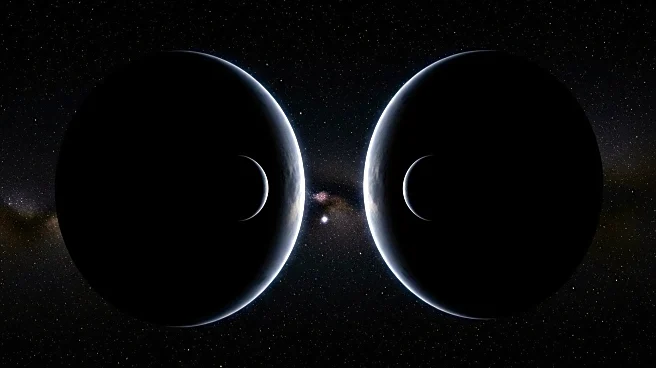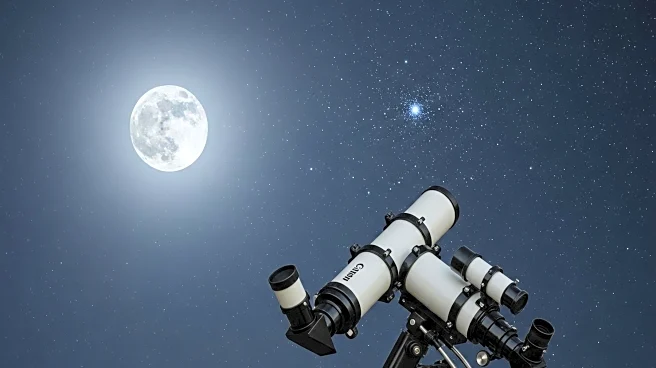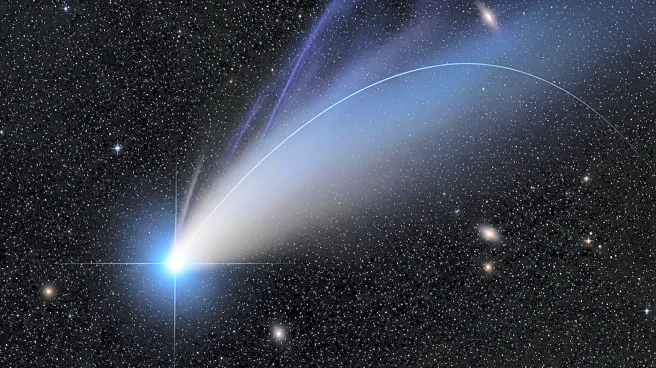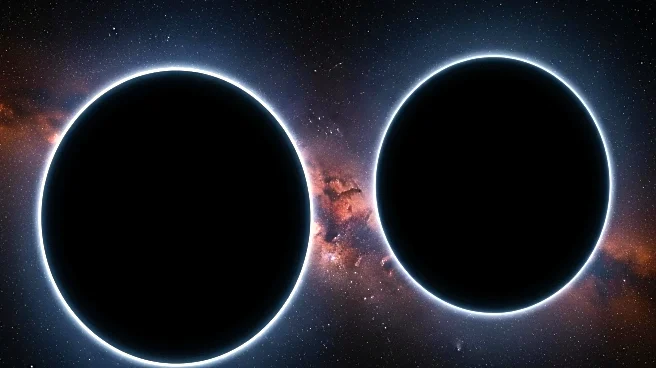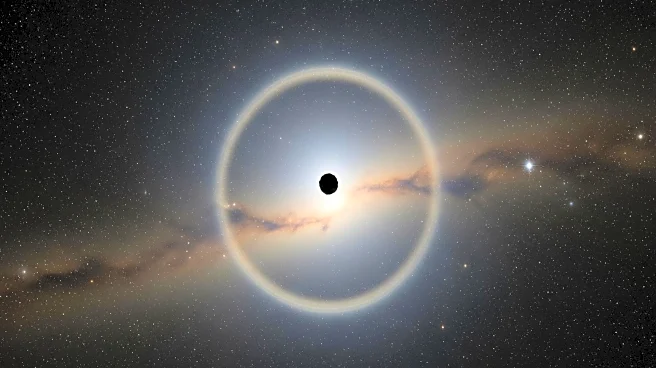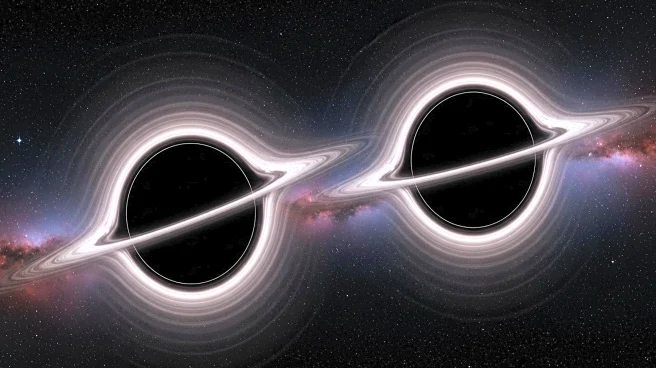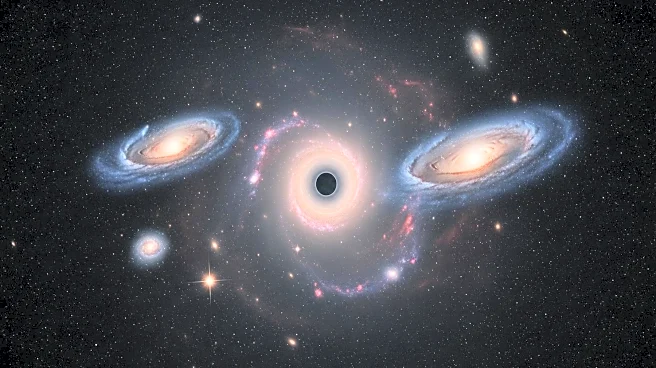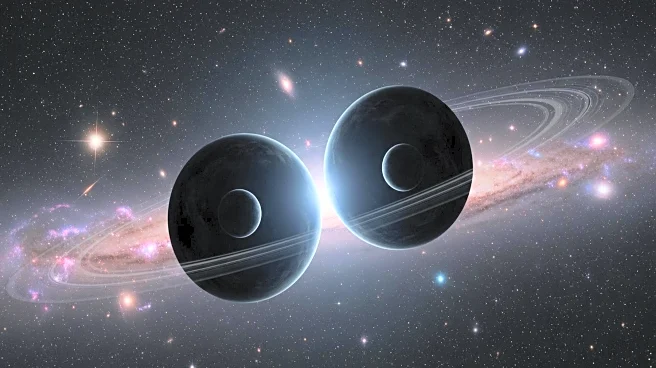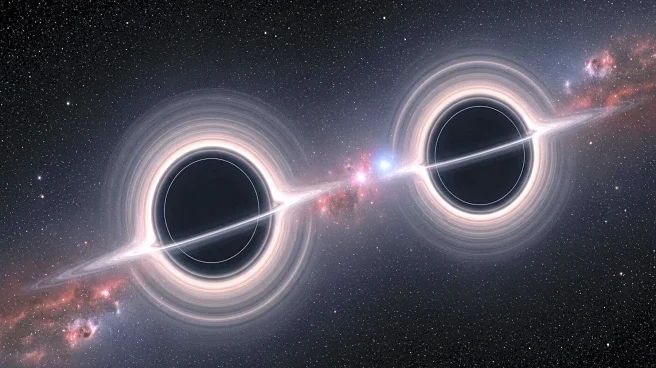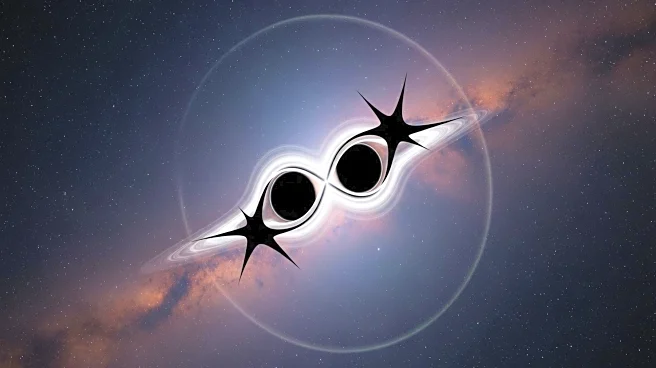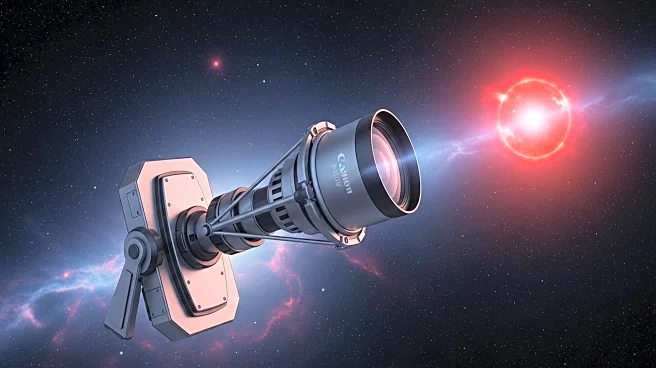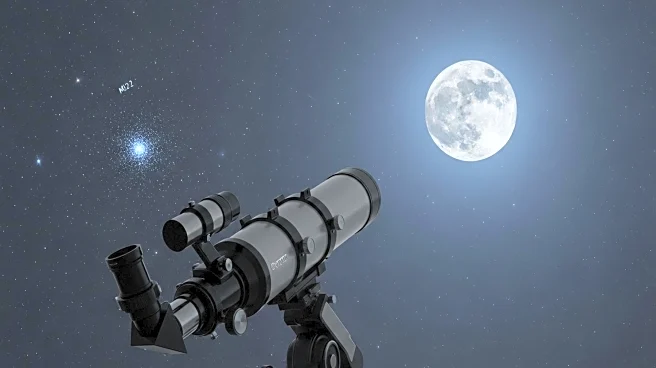What is the story about?
What's Happening?
Astronomers have successfully imaged two black holes orbiting each other for the first time, providing visual proof of black hole pairs. The discovery was made through radio light fluctuations captured by telescopes both on Earth and in space. The two black holes are locked in a 12-year orbit approximately 5 billion light-years from Earth. The larger black hole, known as the blazar OJ287, is a supermassive entity with a mass 18 billion times greater than the sun. The smaller black hole emits a jet of near-light speed particles. This groundbreaking image was published in The Astrophysical Journal, marking a significant advancement in the study of black holes.
Why It's Important?
This discovery is crucial for astrophysics as it provides direct visual evidence of black hole pairs, which were previously only theorized based on gravitational wave detections. Understanding the dynamics of black hole pairs can offer insights into the formation and evolution of galaxies, as these massive entities play a key role in shaping cosmic structures. The ability to image such distant and massive objects also demonstrates advancements in astronomical technology and techniques, potentially paving the way for further discoveries in the field.
What's Next?
Future observations with improved resolution are expected to verify the 'wagging of the tail' of the secondary black hole, which could further confirm the presence of two distinct jets. Continued research may focus on the implications of black hole interactions and their impact on surrounding cosmic environments. As technology advances, astronomers hope to capture more detailed images of similar phenomena, enhancing our understanding of the universe.
Beyond the Headlines
The discovery challenges previous assumptions about the visibility and detectability of black hole pairs, suggesting that more such pairs may exist and be observable with current technology. This could lead to a reevaluation of existing models of galaxy formation and black hole behavior, influencing future research directions in cosmology.
AI Generated Content
Do you find this article useful?
